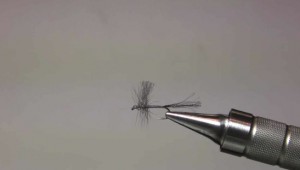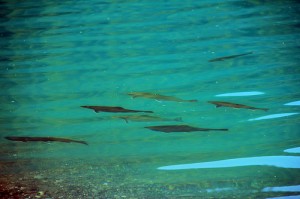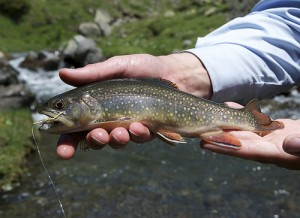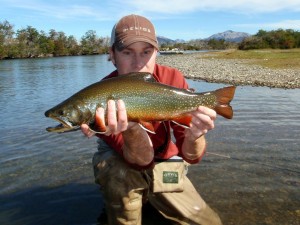Here is a super easy blue winged olive pattern from Orvis News. The thing I love about this video is how simple this fly is to tie. After having entertained myself with a lot of complicated fly tying recipes, I’ve definitely settled on the less-is-more approach. The basic steps in this video are similar to how I tie just about all of my dry flies now, the exceptions being Royal Wulffs, Patriots and Stimulators. Basically, if it’s a Catskill type of dry fly, this is how I do it. I even “cheat” on things like an Adams. Instead of using some feather tips I just use some synthetic material like Z-Lon or whatever I have lying around that will be visible when the fly is floating in the current — much faster to tie and I don’t think the fish have any idea it’s not a “textbook” pattern on the top.
Orvis
That has to be a frigid swim. Fortress Lake in Alberta, Canada, with 3 to 6 POUND brook trout cruising around.
Beautiful and desirable here, invasive over there… but still beautiful. Descended from brook trout that were stocked in the Pyrenees in the 1950s.
Gee whiz, that is a huge brook trout. Tyler Atkins on the Rio Corcovado, Argentina.
The salters? Yes, the saltaahs! An update from Orvis News about efforts to restore sea going brook trout (aka. “salters” that’s right) on Red Brook, a 4.5 mile spring creek that feeds into Buttermilk Bay on Cape Cod, Massachusetts.
The Sea Run Brook Trout Coalition as well as Trout Unlimited are leading this effort. These sea run native brookies are hanging on thanks to these organizations.
Good stuff.
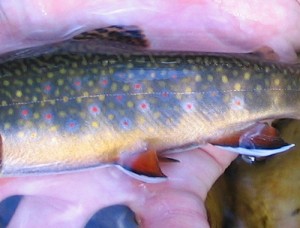
I missed this a couple weeks ago — a great shot of a small native brook trout in Vermont from Orvis News.
Brook trout. Nothing like ’em.
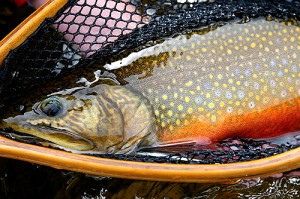
Orvis News has the first part of an article about fly fishing for monster brook trout on Atikonak Lake in Labrador. Writes the author, Erik Rickstad, “[S]ince I hail from the Land of the 10-Inch Trophy Squaretail (aka Vermont) I’m not yet acclimated to the absurdity of the place,” and goes on to describe brook trout that need two hands to hold. Like a normal sized fish, I guess. We’ve covered all that before. I think it was John Gierach who wrote that the objective may not be the size of the fish you catch but the smallest sized fish you’re happy to catch. Certainly true for those of us who love catching brookies.
You cannot call this fish a “brookie,” though. Too cutesy for a brute like that.
Atikonak Lake is right about here:
Yowza.
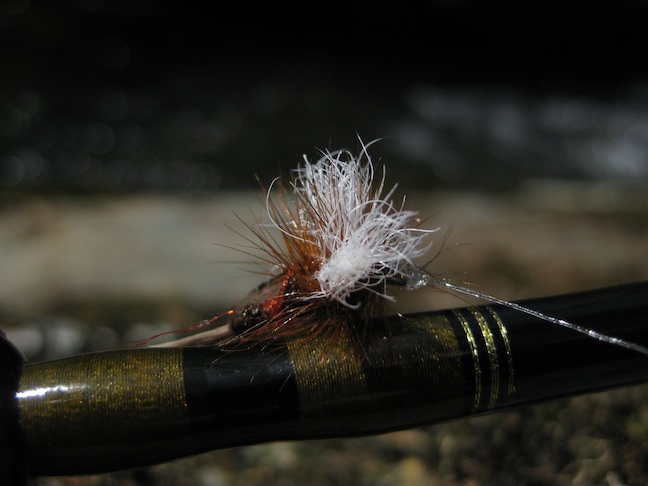
I don’t want to say that the Royal Wulff is the only fly you need to catch brook trout on mountain streams in the eastern United States. It’s not. Some say other flies work better in certain situations and on certain streams. There are those who claim terrestrials are the only way in mid-summer. When hatches occur many insist matching the hatch is a must. When waters are raging nymphing could be your best bet. And so on. No doubt these are all valid views at various times.
Listen to the Orvis Fly Fishing podcast about wild vs. stocked trout with Tom Rosenbauer here
My take on this: the sooner you get out there after the stocking truck is done the better, before the locals take all the fish home!
